Mechanical and Manufacturing Engineering in Trinity College
- The Beginnings
- The School of Engineering
- A chronology of important events
- Mechanical Engineering in the School
- Student Numbers
- Undergraduate Studies in Mechanical Engineering
- Significant Events
- Some Notable Mechanical Engineers
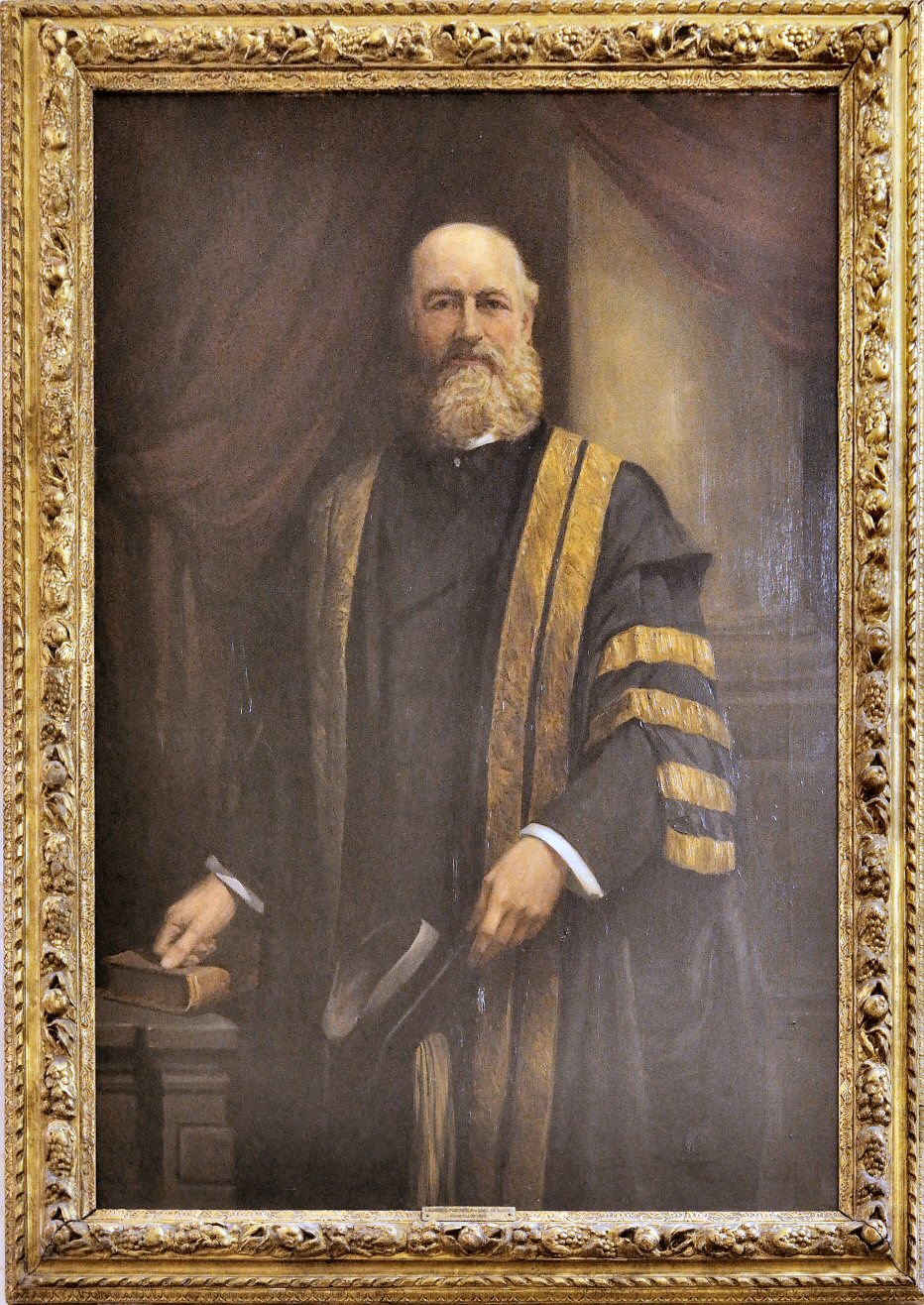
The Beginnings
Shortly after the passage of the Act of Union, consideration was given to the use of state funded education as a way of rendering this country more governable. In 1838 a Select Committee of the House of Commons produced a report on Education in Ireland. Amongst its recommendations was the setting up of four non-denominational colleges, one in each province (the Queen's Colleges), and also the creation of a Central Polytechnic Institute in Dublin. Perhaps the threat of competition from these new institutions was the spur that caused Trinity to set up an Engineering School. The Rev Humphrey Lloyd (1800-1881), then Erasmus Smith Professor of Natural & Experimental Philosophy and later Provost of Trinity College, was charged with the responsibility for the task. The choice of Lloyd was an inspired one, for he looked to Europe and to the methods of teaching in the French Ecole Polytechnique for guidance. He wrote, "...we shall, I believe spend part of the autumn in Paris. I mean to make myself up there in the French plan of instruction for Engineers, with a view to borrowing whatever will bear transportation … ". The Engineering School at Trinity was thus to follow the scientific path in the training of its engineers.
The School of Engineering
On the 15th June 1841 the Board of Trinity College announced in the newspapers that they were founding a School of Civil Engineering and wished to appoint two professors. Student applicants to the two-year Diploma in Engineering were accepted from amongst those who had successfully completed the Junior Freshman year of the Arts course at the university.
Lectures in engineering began on the 15th November 1841. At one o'clock on the same day Humphrey Lloyd gave a praelection to mark the opening of the School. In this he justified the teaching of engineering in the university. He ended by extolling the profession and recommending its study to the assembled students. His final comments are as valuable today as then, and bear repeating.
"Such, gentlemen are the provisions which the heads of the University have made for your instruction. The profession which you have adopted, whose duties were not long since limited to the construction and care of engines, has now risen to take its rank among the first of the liberal professions. In a country like ours, where public works of such magnitude are ever in progress the interests committed to its keeping are numerous and weighty; and the knowledge demanded of it proportionally varied and extensive. It is your part, then, to try to profit by the opportunities thrown open to you. Attend with diligence to the instruction which will be given to you within these halls; take full notes of what you hear; and endeavour to combine the knowledge thus gained with the results of your private reading. You have every inducement that can be offered to exertion. The path which is to conduct you to the goal of your profession is an interesting and attractive one; and the career which afterwards expands before you, is one in which you may serve your country nobly, and earn for yourselves an honourable independence, and an honourable fame."
A chronology of important events
| June 5th | 1841 | Board of TCD formally approves establishment of a School of Civil Engineering (graduates to receive, without conferral, a Diploma in Civil Engineering [DCE]) |
| June 15th | 1841 | Board of Trinity College advertises the foundation of a School of Engineering (published in Daily Advertiser & in Saunders Newsletter) |
| November 15th | 1841 | Lectures in the School of Engineering begin. |
| November 5th | 1842 | John McNeill (later Sir) appointed to the chair of Practice of Engineering. |
| May | 1860 | Licence in Civil Engineering (LCE) approved by the Board of T.C.D. |
| June | 1860 | Master of Civil Engineering (MCE) or in Latin form Magister in Arte Ingeniaria (MAI) approved by the Board of T.C.D. |
| December | 1860 | First conferral of LCE (7 students) |
| December | 1862 | First conferral of the degree MCE (MAI). |
| June | 1872 | Board of TCD approve the degree Baccalaureus in Arte Ingeniaria (BAI). |
| December | 1872 | First conferral of BAI. |
| October | 1951 | Duration of the Engineering degree extended from 3 to 4 years. |
| July | 1980 | Chair of Mechanical & Manufacturing Engineering instituted. First incumbent appointed. |
| October | 1999 | M.Sc. course in Bioengineering begins (for information see website) |
| October | 2000 | Undergraduate course Engineering with Management B.Sc.(Ing) begins |
| October | 2002 | Dual qualification programme (B.A., B.A.I., Diplôme de I’I.N.S.A. de Lyon) begins |
| July | 2004 | 1st conferral of B.Sc.(Ing) to graduates of Engineering with Management course. |
| July | 2005 | 1st graduates from the Erasmus Mundus Masters with INSA de Lyon and ETSIEB Barcelona and 1st graduates of the dual qualification programme |
Mechanical Engineering in the School
Even at the earliest stage of the School topics in mechanical engineering were present, with courses in the Principles of Mechanics and Practical Mechanics and the Steam Engine being offered in the first and second years of the course. The former subject was taught by the Rev T Luby, D.D., F.T.C.D and the latter by Lloyd. However it should be noted that the ethos of the School was Civil Engineering and in 1891 some influential members of the Science Schools Committee wrote to the board saying “…. At present we are a School of Civil Engineering and do not provide instruction in Mechanical Engineering and that Electrical Engineering is essentially a branch of Mechanical Engineering……”. In 1891 a Walter Elsworthy Lilly was appointed as assistant to the Professor of Civil Engineering. Lilly was later (1903) appointed lecturer in Mechanics and put in charge of the Engineering Laboratories.
On his appointment Lilly set out enthusiastically to revamp the teaching of the mechanical engineering aspects of the course and also initiated a programme of scientific research. He had widely varied interests and wrote on topics as diverse as 'the properties of dielectrics' (a subject to surface very much later in the research interests of the school), 'the strength of materials and the design of pumps, boilers and plate girders'.
In 1907 Lilly was appointed 'Lecturer in Mechanical Engineering' and in recognition of his scholarship was conferred with the degree Doctor of Science (D.Sc.). He was also responsible for designing and laying out what was deemed ‘the new Mechanical Engineering Workshops and Electrical Engineering Laboratories’ (now occupied by the Dept of Civil Engineering) behind and to the east of New Square. The pattern of a unified course with some elective subjects in Mechanical &/or Electrical Engineering persisted until 1980.
Student Numbers
Some fifteen students attended for the first years of the diploma in engineering. Only two were noted as taking the diploma. Numbers rose slowly over the years to 1958 when they stood at 20. Over those years there were some significant fluctuations in number, but with one exception they never exceeded 40. The years from 1958 to the present saw student numbers in engineering increase to 700, of whom some 70 final year students are based in the Department of Mechanical, Manufacturing and Biomedical Engineering. Among the early students of engineering were some notable persons. We may mark among them; Nathaniel Hone, Sir C.A. Parsons, Professor C D. West, George Gerald Stoney
Undergraduate Studies in Mechanical Engineering
It should be noted that TCD confers the unified degrees B.A., B.A.I., on all graduands of that stream, without reference to the branch of engineering they follow. From 1970 to 1980 students followed a common course for three years with specific options relevant to Mechanical, Electrical engineering etc., being chosen in the fourth year. In 1981, following upon the creation of the new departments and the effect of the Government’s National Manpower Programme (see later), the curriculum was altered such that all engineering students entering College followed a common initial two years of Engineering Science and at the end of that time then decided which branch of engineering they wished to follow for their remaining two years of study. This is the pattern to this day, with students selecting from either, Mechanical, Electronic, Civil, Computer or Computer/Electronic Engineering.
Following successful completion of the second year of the B.A. B.A.I. stream students can, since 2002, opt to follow a dual qualification programme. This five year programme is run jointly with the Institut National des Sciences Appliquées (I.N.S.A) de Lyon. Trinity students spend their 3rd & 5th years studying at INSA whilst those of that Institute spend their 3rd & 4th years at Trinity. Students who satisfactorily complete the examinations of both institutions then graduate B.A., B.A.I., Diplôme de I’I.N.S.A. de Lyon.
For several years prospective employers and members of staff voiced the need for graduates with training in management methods in addition to their knowledge of mechanical engineering. After protracted negotiations with College management and within the Faculty of Engineering and System Sciences the fulfilment of this need was agreed upon. In October 2000 the first intake of students to the B.Sc. (Ing) programme in Engineering with Management occurred. This course has prospered since then.
Both the BAI and the B.Sc. (Ing) degrees are recognised and accredited by Engineers Ireland and the Institution of Mechanical Engineers.
For information on departmental research activities and higher degree study please see relevant sections of the Engineering School web site.
Significant Events
- The Merger
- The National Manpower Programme and Expansion
- Restructuring of College
- The Department of Mechanical, Manufacturing and Biomedical Engineering
- Holders of the Chair of Mechanical Engineering
- Buildings
The Merger
The ‘Commission on Higher Education in Ireland’ was set up in 1960. Its primary function was the maintenance of standards in higher education at a time of very rapidly rising demands for third level places. The then Minister for Education, Mr Donagh O'Malley, in 1967 announced a government policy to amalgamate Trinity College with University College Dublin into a single University of Dublin. A process of rationalisation was to be instituted and certain subjects were to be taught on one campus alone. Under the proposed plan engineering was to be taught at University College only and the School of Engineering at Trinity was to close. After consideration the closure was abandoned and Trinity was allowed to continue offering an engineering degree based mainly on ‘engineering sciences’. Teaching was, however, to be achieved ‘without significant capital funding’.
The National Manpower Programme and Expansion
In 1979 the national government requested the third level colleges to increase significantly the numbers of graduating students in the technologies. Funds were to be made available to facilitate this. The principle areas for development were Microelectronics, Manufacturing Engineering, and Computer Science. The Engineering School responded enthusiastically and student numbers soon increased. The curriculum was extensively revised by making the 3rd and 4th year’s specialist and keeping the junior two years for a common curriculum studied by all engineering students. This format is retained to this day. At that time Directors of Studies in the three principal areas of Civil (Prof., R. Kirwan), Electronic (Prof., B.K.P. Scaife), and Mechanical Engineering (Dr., W.G. Scaife) were appointed. The appointees were existing senior members of academic staff within the Engineering School.
Restructuring of College
The period between 2001 and 2004 was characterized by severe budgetary constraints. Internally the College demanded significant cutbacks in departmental expenditure while external funding from the Higher Education Authority (HEA) for capital expenditure was withdrawn for several years. This necessitated severe cutbacks in departmental support for many aspects of teaching and research. Indeed it presaged the process of restructuring of all the Faculties, Schools and Departments within College. The powers previously vested in Faculties and departments were devolved to Schools. The conclusion of the first phase of restructuring saw the departments of Mechanical & Manufacturing Engineering, Civil, Structural and Environmental Engineering and Electronic & Electrical Engineering embodied in a newly resurgent Engineering School. The departments of Statistics & Computer Science formed the new School of Computer Science & Statistics. In late 2007 the Faculty of Engineering & System Sciences was dissolved and these two Schools joined with several Schools of sciences to form the new Faculty of Engineering, Mathematics and Science. This Faculty is one of three Faculties within College.
Following the death in 1985 of the then Head of the Engineering School the title remained vacant for some considerable time. The responsibilities of this office were taken over the by the dean of the Faculty of Engineering & System Sciences and this remained so until 2005. With the restructuring of College and the resurgence in the importance of Schools a new head of the Engineering School was elected. The outcome of the election resulted in Prof., John Fitzpatrick assuming this role and after a second election in 2008 he is currently serving his 4th year in this capacity.
The Department of Mechanical & Manufacturing Engineering
In 1980, in order to cope with the expansion brought about by the National Manpower Programme, the School was rearranged with the creation of three new departments. Thus the Departments of Microelectronics & Electrical Engineering, Civil Engineering, and Mechanical & Manufacturing Engineering came into being. The Department of Computer Science had been in existence since 1969. These four departments then formed the Engineering School and, with the addition of the Department of Statistics, the Faculty of Engineering & Systems Sciences. The existing posts of Directors of Study were disestablished and new Heads of Department were appointed. New professorships of Engineering Science were also created at this time, one of which was the senior professor of mechanical engineering. In 1986 the title was changed to Professor of Mechanical & Manufacturing Engineering and finally, in 1998, to its present form - Professor of Mechanical Engineering. To the present time there here have been three Professors of Mechanical Engineering.
Holders of the Chair of Mechanical Engineering
- 1980 – 1981 | Paul Wallace
- 1982 – 1992 | David Taplin
- 1992 – 2012 | John Fitzpatrick
- Presently vacant
Since 1980 the policy and academic direction of departments is under the supervision of Heads of Department and thus far the Department of Mechanical & Manufacturing Engineering has been guided by nine members of staff.
- 1980 – 1981 | Paul Wallace
- 1981 – 1982 | Bernard Corbally
- 1982 – 1992 | David Taplin
- 1992 – 1998 | John Fitzpatrick
- 1988 – 2004 | John Monaghan
- 2004 – 2007 | Andrew Torrance
- 2007 – 2010 | Henry Rice
- 2010 – 2013 | David Taylor
- 2013 – 2016 | Darina Murray
- 2016 – 2019 | Danny Kelly
- 2019 – Present | Ciaran Simms
Buildings
At the outset the rooms set aside for engineering lectures were situated in the East Theatre section of College. These were deemed suitable for the Engineering and Natural Philosophy Schools but not for Chemistry. In August 1847 the Board agreed to spend the sum of £357 (~€420) on a "drawing room". This room was housed in a temporary building and was completed by 10th October 1847. The building stood on the site of the present 1937 Reading Room.
In February 1853 the Board decided to construct "new lecture rooms etc." This decision culminated in the construction of a splendid new building in New Square. This was called the Engineering School, but sadly is now more generally known as the Museum Building. The building is primarily the work of Sir Thomas Deane and his partner Benjamin Woodward.
Woodward was responsible for the interior of the building and its curious mixture of Romanesque, Byzantine and Moorish decorative motifs reflect his interest in the artistic mores of John Ruskin. The exterior carvings, each unique, are the work of noted Irish stone masons, the O'Shea brothers of Cork.
Consent for building was granted by Board on the 25th June 1853, the estimated cost was £23,000 (~€34,000). After the usual difficulties which attend any major work the building was finally completed at a cost of £27,680 (~€37,000). Engineering lectures commenced in November 1857 and some are held there to this day.
In order to facilitate the development of both mechanical and electrical engineering the board of the College authorised the construction of a new building sited beside the rugby pitch to the north side of College. This building housed the Mechanical Engineering Workshops and the Electrical engineering laboratories. These facilities opened in 1903 and were intended for teaching purposes only. During 1952 the laboratories and workshop were partially re-equipped from monies donated by engineering graduates and others. Two years later the building was extended to house additional laboratories. In 1960 monies from the Beaver Fund were used to purchase and revamp No's 21/22 Lincoln Place. These houses lay outside the College proper and had previously been in commercial use by Panton's Dental Depot, a supplier of materials to the dental profession. In these buildings mechanical engineering staff and students worked happily, cheek by jowl, with their electrical engineering counterparts. Later, Ireland's first digital computer and the infant department of Computer Science were also housed within. The situation pertained for many years and this author has happy memories of those times.
Standing within the College boundary and immediately behind No's 21/2 Lincoln Place is a building which until 1977 was occupied by the College's School of Pathology. This School moved to the newly created St James's Hospital and upon vacation the building was extensively refurbished. The newly created Department of Mechanical & Manufacturing Engineering took possession and the building was officially re-opened in 1981 by the then Provost, William Watts. It is now called the Parsons Building in honour of Sir Charles Parsons a famous Irish engineer. In 1994 the premises in Lincoln Place were sold to the Dublin Dental Hospital and the monies so raised were used to build a striking extension to the Parsons Building. This extension, designed by Grafton Architects, houses new laboratories and staff offices and it represents the first phase of the buildings development. The second phase (also designed by Grafton Architects) saw the construction of another extension on the north-east corner of Parsons Building. This extension provides lecture rooms, offices and laboratories to accommodate the Engineering with Management programme and also the Trinity Centre of Bioengineering§. This project added a further ~700m2 space to Parsons Building and was completed in October 2003. In 2005 the main lecture theatre of the building was named in honour of Sir Bernard Crossland (Emeritus Professor of Mechanical Engineering, The Queens University Belfast) an engineer of considerable note and a friend of engineering both at Trinity and in Ireland. Since then no further infrastructural developments have occurred.
Interest in the medical applications of mechanical engineering began in 1984 with the formation of the Biomaterials Research Centre, subsequently renamed Bioengineering Research Centre and, in 2002, the Trinity Centre for Bioengineering (T.C.B.E). This coincided with growth in related industrial activities in Ireland, notably in the medical device sector. Currently there are approximately 50 people carrying out research in TCBE, including academics from a variety of backgrounds in engineering, biology and medicine.
End Notes
In order to write this short history of the Department of Mechanical, Manufacturing and Biomedical Engineering I have drawn quite liberally on the work of others, in particular from Dr R.C. Cox’s excellent history ‘Engineering at Trinity’. This book gives a more fulsome account of the overall development of the subject at Trinity College Dublin and I encourage the interested reader to consult the work [1].
CGL, 2008
[1] Cox R.C, ‘Engineering at Trinity: An Illustrated History’, 1993, School of Engineering. Trinity College Dublin. ISBN 0 9522597 0 2.
Some Notable Mechanical Engineers
Charles Dickinson West (1847-1908), The Father of Mechanical Engineering in Japan
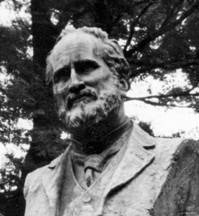
Charles Dickinson West was the eldest son of Dr. John West, Dean of St. Patrick's Cathedral Dublin, and graduated from Dublin's Trinity College in 1869 with a gold medal in civil engineering. For the next several years, he was employed by shipbuilding, steel, and steam engineering firms in Britain. In 1882, West accepted an appointment and went to Japan as Professor of Mechanical Engineering at the Tokyo Imperial College of Engineering. He continued in the service of the Japanese government for 25 years, until his death in 1908.
West was one of several foreign engineers who led Japan's industrialization as professors at Japan's first engineering colleges and universities. He and his colleagues substantially assisted Japan in attaining the position it now occupies among the nations of the world.
Charles West truly loved his students and colleagues, and the land, people and the culture of Japan. During his entire stay in Japan, West returned to Europe only once. Most of his English colleagues left Japan after the completion of their contract period, usually five years, but West fulfilled his desire to stay in Japan for the rest of his life. West was well-received by the Japanese on account of his appealing personal character as much as he was esteemed for his knowledge of engineering and science. The Meiji Emperor awarded West a decoration of the highest honour in 1905 for his contribution to higher education in engineering.
West's contribution as a teacher of mechanical engineering in Japan was indeed unmatched. Many of his diaries and manuscripts are preserved in the library of the Department of Mechanical Engineering at Tokyo University. They include lecture notes and examination problems given to his students, which clearly show the high level of mechanical engineering education in his day. A total of about 1,300 students attended West's lectures during the 25 years of his service in Japan. His students became the leaders in the fields of machine-making, shipbuilding, and engineering education.
West developed pneumonia during a winter stay at a hot-spring resort in 1907, and died in Tokyo University Hospital on January 10, 1908. He is buried in Aoyama Cemetery, Tokyo. A bronze monument to his memory was unveiled on March 19th 1910. The plaque still stands on the main campus of Tokyo University.
The Hon. Sir Charles Algernon Parsons O.M. K.C.B. F.R.S (1854-1931)
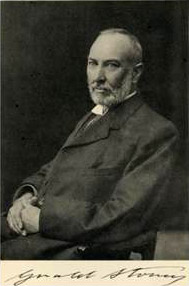
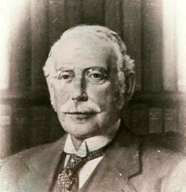
Charles Parsons was the youngest son of the third Earl of Rosse. He entered TCD in 1871. He graduated in Mathematics from University of Cambridge in 1877. Parsons created the world's first steam turbine generator in 1884, and pioneered the application of steam turbines for marine use with the Turbinia. Charles Parsons established a very successful manufacturing business, C A Parsons & Co., at Newcastle upon Tyne and later took over and revitalized the ailing optical business of Howard Grubb. Parsons remained ever a great the experimentalist, but, sadly for him, his vigorous attempts to synthesize diamond using high pressures and temperatures failed. In recognition of his achievements he was elected Fellow of the Royal Society, knighted and admitted to the Order of Merit, his skill as an engineer was internationally acknowledged.
George Gerald Stoney D.C.E. D.Sc. F.R.S (1863-1942)
George was the nephew of Bindon Blood Stoney F.R.S and eldest son of the scientist George Johnstone Stoney F.R.S, who was one of the tutors and astronomical assistants employed by the Earl of Rosse at Birr. G.G. Stoney entered Trinity in 1882 and graduated with a gold medal in experimental science, and with first place in engineering. In 1888 he joined his lifelong friend Charles Parsons in Messrs Clarke, Chapman, Parsons & Co., Gateshead. Here he was to gain experience with the compound steam turbine. In 1895 he left Gateshead to join the newly founded C A Parsons & Co Newcastle, where he became chief designer and in 1910 technical manager of the Heaton works. Elected Fellow of the Royal Society in 1911, he held the chair of Mechanical Engineering at the College of Technology at Manchester from 1917 to 1922 when he rejoined Parsons as director of research.
Nathaniel Hone D.C.E. R.H.A. (1831-1917)
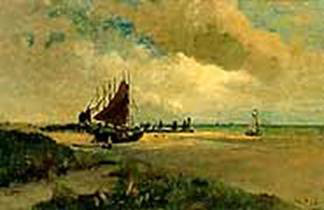
Boats on the shore, Malahide
One of Ireland’s great landscape painters and the great-grand nephew of Nathaniel Hone, who was also an Irish painter and of even greater note than our Nathaniel. Hone (the younger) worked for a period as an engineer with the Midland Great Western Railway and then gave up engineering. He went to France to study painting and subsequently returned to Malahide in County Dublin to spend the remainder of his life painting. His output was prodigious and his widow left 1437 of his works to the National Gallery of Ireland where they may still be seen today.

